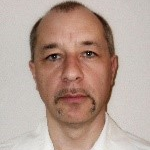Challenges in the Long-Term Behaviour of Highly Radioactive Materials
A special issue of Sustainability (ISSN 2071-1050). This special issue belongs to the section "Sustainable Materials".
Deadline for manuscript submissions: closed (31 December 2021) | Viewed by 9974
Special Issue Editors
Interests: amorphous and crystalline materials; glass transition; vitrification; nuclear waste management; immobilisation; radiation effects
Special Issues, Collections and Topics in MDPI journals
Interests: actinides; ceramic and glass waste forms; Chernobyl; radiation damage effects in solids; non-organic sorbents
Interests: materials for high-level waste immobilization; characterization of fuel debris; chemical durability of final waste forms; nuclear forensics
Special Issue Information
Dear Colleagues,
Highly radioactive materials are at the core in many useful applications ranging from operating nuclear reactors to vitrified highly radioactive waste that is currently stored and will be finally disposed of in deep geological formations. The crucial question in all applications concerns the behaviour of such materials in the conditions of intense self-irradiation combined with adverse and often highly corrosive environments. The stability and durability of highly radioactive materials are highly affected by both radiations, accumulated changes caused by irradiation, and adverse actions of the environment. Even small changes can gradually lead to structural and functional changes in material properties and cause their failure with time, particularly in the long-term. Irreversible transformations and accelerated corrosion have been already reported for highly radioactive crystalline and vitreous materials that are of practical importance in limiting waste form loading and safety assessment models. Therefore, the behaviour of highly radioactive materials presents a challenge to science and technology, particularly, when considering the durability and long-term stability of materials.
This Special Issue will analyse issues related to the behaviour of highly radioactive materials. It will focus on the assessment of effects resulting from self-irradiation on crystalline, vitreous and glass crystalline materials designed for nuclear waste disposal. It will also include analysis of highly radioactive materials which resulted from nuclear accidents such as Chernobyl and Fukushima.
This Special Issue will analyse challenging aspects of highly radioactive materials behaviour in systems and activities related to peaceful utilisation of nuclear energy. It aims to support environmentally safe and sustainable utilisation of nuclear energy assessing effects resulting from self-irradiation on crystalline, vitreous and glass crystalline materials used in nuclear applications including nuclear power reactor and waste immobilisation materials.
Papers selected for this Special Issue will be subject to a rigorous peer review procedure with the aim of their rapid and wide dissemination.
Prof. Dr. Michael Ojovan
Dr. Boris E. Burakov
Dr. Bella Y. Zubekhina
Guest Editors
Manuscript Submission Information
Manuscripts should be submitted online at www.mdpi.com by registering and logging in to this website. Once you are registered, click here to go to the submission form. Manuscripts can be submitted until the deadline. All submissions that pass pre-check are peer-reviewed. Accepted papers will be published continuously in the journal (as soon as accepted) and will be listed together on the special issue website. Research articles, review articles as well as short communications are invited. For planned papers, a title and short abstract (about 100 words) can be sent to the Editorial Office for announcement on this website.
Submitted manuscripts should not have been published previously, nor be under consideration for publication elsewhere (except conference proceedings papers). All manuscripts are thoroughly refereed through a single-blind peer-review process. A guide for authors and other relevant information for submission of manuscripts is available on the Instructions for Authors page. Sustainability is an international peer-reviewed open access semimonthly journal published by MDPI.
Please visit the Instructions for Authors page before submitting a manuscript. The Article Processing Charge (APC) for publication in this open access journal is 2400 CHF (Swiss Francs). Submitted papers should be well formatted and use good English. Authors may use MDPI's English editing service prior to publication or during author revisions.
Keywords
- nuclear materials
- irradiation
- durability
- stability







